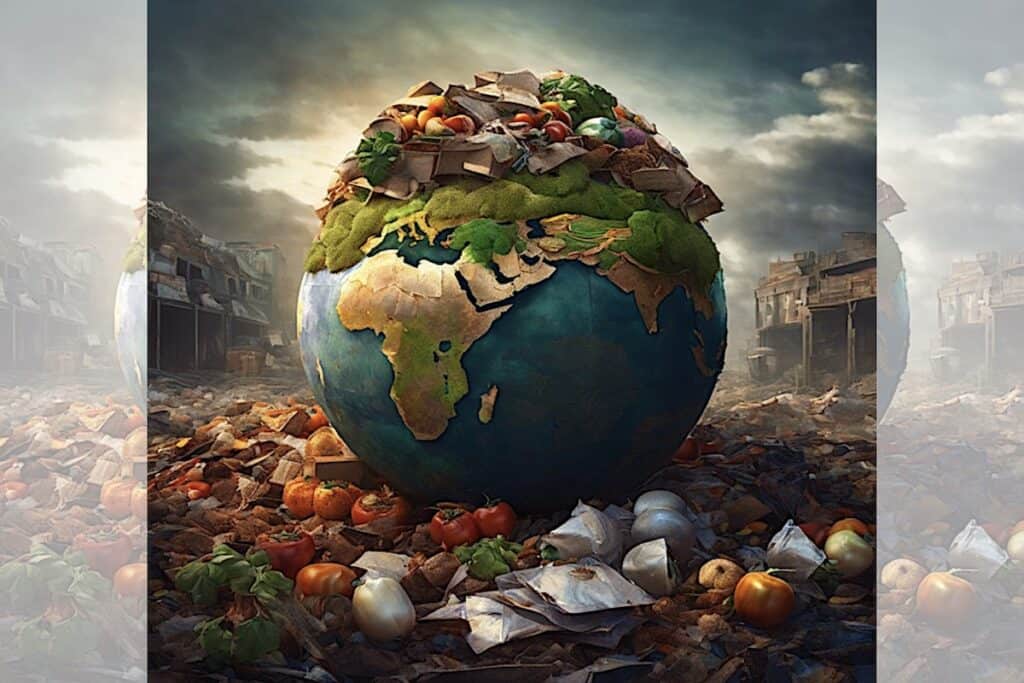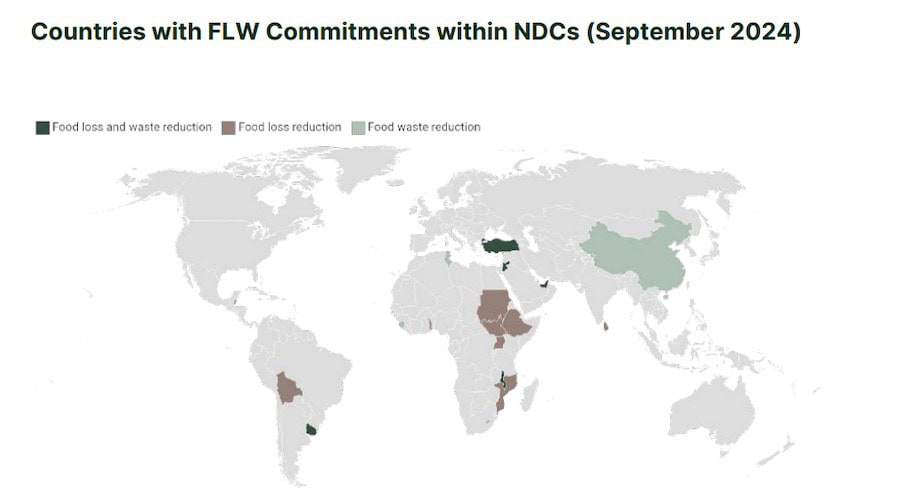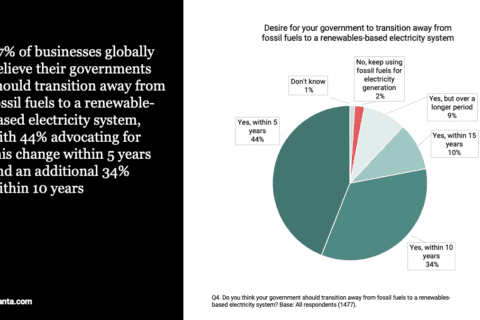
Food waste contributes up to 10% of global emissions, five times more than aviation — however, nearly 9 out of 10 countries worldwide (88%) still fail to focus on the issue and include it in their climate targets.
Global environmental action NGO WRAP is using COP29 to urge countries to include food loss and waste in their Nationally Determined Contributions (NDCs), after the latest figures expose the scale of failure to date.
A new report — Global Action Drive For Food Loss and Waste Reduction — reveals that of the 195 countries attending COP29, only 12 have committed to reducing food waste and just 17 to tackling food loss.
That means a staggering 88% of countries at COP29 have made no commitments so far in their NDCs.

Billions of tonnes and trillions of Dollars
Food waste numbers and impacts are huge; and getting bigger. Around 30% of all food goes to waste each year, with loss and waste predicted to top 2.1 billion tonnes per annum by 2030, at a cost of $1.5 trillion.
Food production is already a critical factor in climate change, explains Harriet Lamb, CEO WRAP:
‘Our global food system is broken and is wrecking the environment. The IPCC made it clear that food production contributes 37% to all greenhouse gas (GHG) emissions and even if all other emissions ended immediately, global food production alone would push us far beyond 1.5°C.“
So, the fact that so few countries are addressing the waste issue is shocking, adds Lamb:
“Wasted food contributes almost five times more GHG emissions than aviation and were it a country, food waste would be the world’s third largest emitter after China and the USA.”
Golden opportunity for a win-win
Upping the ante, the latest Food Waste Index Report (2024), compiled by the United Nations Environment Programme (UNEP) and co-authored by WRAP, found that the world wastes over a billion tonnes of food — one fifth of all food available to consumers at the retail, food service and household level annually.
This is in addition to 13% lost in the supply chain, according to the Food and Agriculture Organization (FAO).
This food loss and waste not only has devastating impacts on society and global economies, but climate too.
Flagging a potential win-win, WRAP advises that countries are missing a golden opportunity to tackle GHG emissions and increase security of food supplies to their citizens by preventing food loss and waste.
As members of the Global Action Drive (GAD), WRAP and its partners are calling on all countries to take the following decisive steps, both at COP29 and in beyond:
- Commit to delivering UN Sustainable Development Goal 12.3 and halve per capita global food waste at the retail and consumer levels, plus reduce food losses along production and supply chains, including post-harvest losses, by 2030;
- Include this commitment in their new NDCs to be submitted by early 2025;
- Set meaningful targets and intersectoral mechanisms to operationalise follow up;
- Back this commitment with specific practical policy measures;
- Start measuring and reporting food loss and waste at national and sector levels; and
- Include solid national data to report on progress through the biennial transparency reports.
Best practice and goals for COP30
Based on its research into how countries have integrated food loss and waste into their NDCs to varying degrees, WRAP and GAD have published a best practice guide Why & How to Incorporate Reducing Food Loss and Waste into Nationally Determined Contributions (NDCs).
Countries have until February 2025 to submit their NDCs for COP30 and WRAP is calling on all governments to include food loss and waste reduction ahead of the next global meeting.
Doing so offers countries that signed the Global Methane Pledge (158 countries, COP26 – EU and US), and those who signed UAE Declaration on Sustainable Agriculture, Resilient Food Systems, and Climate Action (160+ countries, COP28) the opportunity to strengthen their climate commitments.
The circular economy holds the key to the future of food, concludes Harriet Lamb:
“Food, textiles and manufactured products account for nearly 50% of GHG emissions. Addressing the problems in our food system and creating a circular economy are key to tackling these huge emitters of greenhouse gases. We must embrace circular living in every boardroom and every home.“
NGOs unite around a shared agenda
Formed in 2024, the Global Action Drive (GAD) brings together internationally active non-governmental organisations around a shared agenda to accelerate regional and national action on food loss and waste and provide support to existing initiatives — in particular the Champions 12.3 Coalition.
Organisations under GAD include WRAP, the World Resources Institute, WWF, ReFED, NDC Partnership and UN Sustainable Development Solutions Network.
WRAP is a global environmental action NGO catalysing policymakers, businesses and individuals to transform the systems for food, textiles and manufactured products, responsible for nearly 50% of GHGs.
Its goal is to enable the world to transition from the old take-make-dispose model of production to more sustainable approaches that will radically reduce waste and carbon emissions from everyday products.
WRAP’s work includes: UK Plastics Pact, Courtauld Commitment 2030, Textiles 2030 and the campaigns Love Food Hate Waste and Recycle Now. It also runs Food Waste Action Week and Recycle Week.
Further Reading:
- Read and download the full report Global Action Drive For Food Loss and Waste Reduction;
- More about global environmental action NGO WRAP;
- More about the Global Action Drive (GAD); and the Champions 12.3 Coalition;
- More from the latest Food Waste Index Report (2024), compiled by UNEP;
- More from the FAO report Tackling food loss and waste from the farm to the table and beyond;
- More on best practice guide from WRAP and GAD linking food loss and water to NDCs;
- Also on SustMeme, Pilot plant for sustainable protein from microbes;
- Also on SustMeme, Innovative leather alternative made from beer waste;
- Also on SustMeme, Half of humanity affected by land degradation;
- Also on SustMeme, Circular economy strategies can cut global emissions by 39%;
- Also on SustMeme, How to kick-start circular food systems in the city;
- Also on SustMeme, Why there is more to anaerobic digestion than just food;
- Also on SustMeme, Are pea, canola and oat the future for plant protein?
- Also on SustMeme, Changing the word on waste: ‘Future of Food’ in The Times (2018).
Check out the full archive of stories on the SustMeme Circular Economy Channel, Sponsored by Dow.







